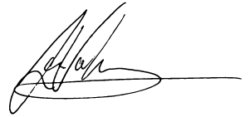How Mirriad Advertising could solve a Catch-22 dilemma
2nd June 2022 |
The market sell-off continues to weigh heavily on several stocks in the global technology sector.
This includes subscription-based media giants such as Netflix and Disney.
Incredibly, Netflix’s share price has fallen 50% in the space of just four weeks. Since 19 April, Disney’s share price has fallen by roughly 15%.
The rapid decline in Netflix’s share price was fuelled by the loss of 200,000 subscribers in the first quarter of 2022.
This was the first time in a decade that Netflix had lost subscribers..
What’s more, according to Liska Schmitz, managing director at consulting firm BCG, “investors are now looking at profitability” – meaning that the financial resilience of these tech companies now takes precedence over future potential.
But, with subscriber growth stalling, how can media companies move towards profitability at a time when macro conditions are worsening?
One answer could be advertising.
In its Q1 2022, Netflix revealed it is exploring ways to bring in advertising to its platform.
However, this brings its own conundrum.
If streaming companies introduce more advertising on their platform, their existing subscriber bases may be alienated.
After all, adverts disrupt viewership, and may lead to paying customers switching to other ad-free streaming services.
Put another way, the growth in revenues from the sale of advertising campaigns may be negated by the loss of subscribers.
We believe that this Catch-22 dilemma boosts an already strong investment case for Mirriad Advertising (LSE: MIRI).
Mirriad is a video technology company.
It has devised a solution that subtly inserts advertising content into footage after that footage has been produced.
The solution has little effect on viewing experience and reduces the need for traditional advertisements.
This is why we believe Mirriad’s technology could be the key ingredient for companies seeking to maintain their subscription bases, whilst incorporating advertising campaigns into their platforms.
Mirriad’s latest financial figures are solid.
For the year ended 31 December 2021, Mirriad’s revenues remained virtually unchanged at £2 million (in comparison to the previous year).
Mirriad’s liquidity position is also healthy, given that it held £24.5 million in cash as of 31 December 2021.
In addition, Mirriad’s US-based revenue for 2021 grew 182% on the previous year, coming in at £884,000.
Mirriad therefore has a growing – if currently small – presence in what is the largest advertising market in the world. This is encouraging to see, given the potential uptake in advertising campaigns amongst major US tech companies, as discussed above.
Of course, with recession looming, marketing strategies may be the last concern for some companies right now as they look to slash costs.
However, it is possible that companies which are able to remain in business actually increase their advertising spend.
The logic for this is that the competition for consumer money hots up, whilst the cost of advertising expenditure falls. Those that do risk spending on advertising at this time can benefit as the economy moves out of recession.
Once again, this could play into the hands of Mirriad, as companies seek ways to get through these tough times with one eye on the future.
We reiterate our BUY recommendation on the stock. You can find the original recommendation here.
Buy list update
Saietta Group (LSE: SED)
Saietta is an engineering company, specialising in the production of electric propulsion motors for the two- and three-wheeler electric vehicle (EV) market.
In particular, we remain excited about the possibilities for Saietta in India and other countries in Asia, which are in the early stages of the Green Energy Transition.
The latest news flow from Saietta is encouraging.
For the financial year ended 31 March 2022, Saietta is expecting revenues to be £3.6 million. This is a four-fold increase on the same period in the previous year.
The impressive revenue growth is being fuelled by Saietta’s commercial expansion.
In particular, the November 2021 launch of Propel, a new, electric marine propulsion system, has given Saietta access to a new area of the EV market.
In addition, on 4 April 2022, Saietta announced the successful acquisition of an 86,000 square feet manufacturing facility, in Sunderland, UK.
The facility will be able to produce 100,000 units of Saietta’s flagship axial flux technology (AFT) product per year.
The acquisition of the Sunderland plant comes two years ahead of Saietta’s target of establishing a UK-based production facility by 2024.
In our view, Saietta has all the ingredients for business growth.
Expansion into new areas of the EV market, on top of a new manufacturing facility, is giving Saietta a solid platform on which to build, in the context of the Green Energy Transition.
We reiterate our BUY recommendation on the stock. You can find the original recommendation here.
The Frontier Tech Investor “Top Three”
Sometimes it’s hard to decide on which stocks to invest in from our buy list.
Below is our Frontier Tech Investor “Top Three” section showing three stocks in open BUY positions. If you’re trying to figure out what to invest in next, these are three that we think are a great place to start.
This doesn’t mean our other stocks are no good: this is just a tool to help you spot the next Frontier Tech Investor stock that could be worthy of your consideration.
Pod Point Group (LSE: PODP) – The UK’s inadequate (for now) electric vehicle (EV) charging network is threatening to bring the EV transition to a halt. By 2032, the shortfall of EV charge points in the UK is estimated to reach 250,000. However, Pod Point’s innovative range of EV charging solutions could go a long way in ensuring this deficit is reduced. The company’s charging technology is fit for homes, public charging bays, lamp posts and commercial buildings, and can ensure that the EV transition reaches all areas of the UK. In our view, Pod Point can unlock the potential of the UK’s EV charging network. You can find the original recommendation here.
Volex (LSE: VLX) – Volex is a global manufacturer of power and connectivity products. This includes power cables, fibre optics and charging plugs. It might sound a little basic, but these are critical mechanisms which are powering some of the key technologies of the modern day. These technologies include electric vehicles (EVs), artificial intelligence (AI) and big data networks. Volex has huge credibility behind it, particularly as it does business with some of most widely recognised companies in the world, including Tesla. You can find the original recommendation here.
Team17 (LSE: TM17) – Team17 is a video game publisher. It has a large collection of games which contains some of the most popular games of the gaming world. One of which is Worms, the enthralling last-man-standing survival game born out of the nineties gaming boom. Team17 is keeping up with the times and offers its games across a number of contemporary technology platforms. It has even flirted with the idea of non-fungible tokens (NFTs), a megatrend which could revolutionise the gaming industry. At a time where sceptics think online gaming will come off the boil following the ease of lockdown restrictions, Team17 keeps gamers coming back for more. You can find the original recommendation here.

Sam Volkering
Editor, Frontier Tech Investor

Elliott Playle
Analyst, Frontier Tech Investor


